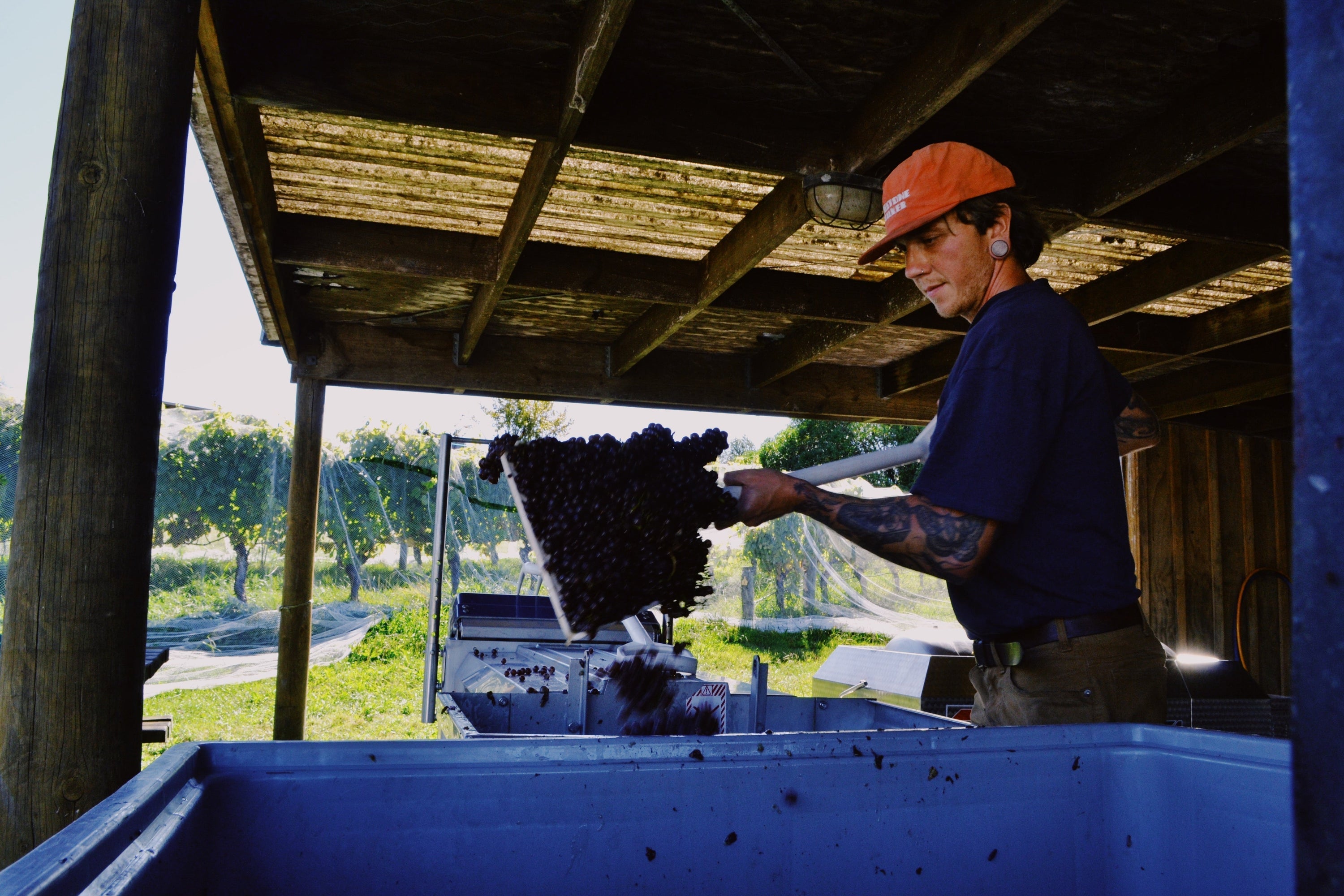
Brood Fermentation: Minimal Fuss, Maximum Feeling
Some wines don’t need a big introduction but we reckon Brood Fermentation deserves one. When their bottles landed on our tasting table, they stopped us in our tracks. Salty, textural, quietly wild. The kind of wines that make you lean in and ask, who’s behind this?
So, as we brought Brood Fermentation onto the Glengarry shelves, we took a moment to catch up with Lauren Yap and Jim Brown - the duo behind the label - to talk about their journey, their ethos, and why their wines belong on the table, not the pedestal.
Part conversation, part Q&A, all story. Here’s Brood Fermentation: minimal fuss, maximum feeling.
Not far from apple orchards and hop farms, around coastal Nelson, you’ll find Lauren Yap and Jim Brown. Their label is small, hands-on, and quite possibly your favourite winemaker’s favourite under-the-radar project.
After 15 years working across six countries, they landed in Nelson in 2020 with just enough energy and idealism to build something from the soil up. Today, that looks like a direct-fire brewery, a dry-farmed vineyard on golden Moutere clays, and a growing lineup of wines that are as compelling as the people behind them.
“We’re just trying to make yum beverages,” says Lauren.
It sounds breezy - until you taste what they’re bottling. Wild ferments, no fining, no filtration, minimal sulphur. Wines with texture and salinity, shaped by the clay and sea air.

“We’re big believers in staying curious and creative,” Lauren adds. “At the heart of it all, we just want to make yum beverages - always with integrity and a focus on the purity of the grapes.”
Of their past experience - "We’ve been lucky to work in some amazing wine regions around the world. Standouts for us include Casagori in Italy, Nibiru in Austria, Fossil & Fawn in Oregon, and Commune of Buttons and Basket Range Wines in South Australia.
Here in New Zealand, we’re constantly inspired by legends like Luta/Unkel Wines, Ashleigh Barrowman, and A Thousand Gods."
How has your previous experience shaped your winemaking now?
We’ve learned how to balance flavour, acidity, texture, and tannin. Those are the cornerstones of great wines. While every region teaches you something new, New Zealand has really challenged us to adapt. The combination of our international experiences and Nelson’s unique terroir has deepened our respect for vintage variation and site expression.
What grape variety would you love to work with next?
Italian reds like Sangiovese, Nebbiolo, and Nero d’Avola are high on the list. On the white side, we’re super keen to explore more with Muscat, Chenin Blanc, and Malvasia. There’s so much potential in these varieties, especially in our kind of hands-on, low-intervention approach.
We checked in during the final week of harvest. A few small parcels were still trickling in, the Pinot Noir ferments looking especially exciting.
“It’s been a cooler season with more rainfall, which helped with vine health and even ripening. As always, harvest is a special time - our small picking team, along with friends and family, make it a joy. We celebrate each day with long lunches, good wine, music, and laughs. There’s a real buzz around the vineyard.”
A favourite site is Te Mara, a 25-year-old block of Pinot Gris planted on dense Moutere clay. They’ve been farming it organically and dry - no irrigation, just rainfall - since winter 2020. The result is Playflight, a skin-contact Pinot Gris with spice, salinity, and presence.
“It’s textured and reflects the vineyard’s power,” they say.
Te Mara sits on a peninsula in Nelson Bays, with long sunshine hours, cool nights, and a salty breeze off the sea.
In 2023, they made a single-barrel Chardonnay from the same site. Wild fermented, topped up once, then bunged and left for a year. A touch of flor, then six months in bottle.
“A tightrope between reductive and oxidative,” they describe - a quiet nod to Jura.
Brood isn’t just a winery. It’s also a slow-beer project, producing seasonal, barrel-aged releases - about five per year that often incorporate local fruit.
“The beer side speaks more to slow processes,” Jim says. “Something to introduce to people. Barrel-aged beers that aren’t just stouts.”
Jim also spent time in Oregon’s Eola-Amity Hills at a B-Corp, biodynamic, dry-farmed winery. Lauren, meanwhile, was brewing in the U.S. for Migration Brewery. The two met in Blenheim, worked a vintage together, and moved to Portland - Jim making wine at Brooks, Lauren brewing professionally. The idea for Brood was born not long after.
Nelson made sense. It’s a hop-growing region, a grape-growing region, and close to where barley is grown. It’s basically a fruit basket.
Brood might not be new, but it’s starting to show up in all the right places - bars, restaurants, retailers. The kind of spots where the people pouring know the story behind the bottle.
“Brood” comes from Lauren’s background in beekeeping. “In the hive, the brood is where life begins - where the queen lives and new bees are nurtured. That idea of growth and creativity felt like the perfect metaphor. Fermentation is the thread that ties it all together.”
There’s a looseness in how they describe their approach - “very experimental at the start” but there’s nothing loose about the wines. They’re precise, confident, and table-ready.
“Wines that don’t need a big intro,” they say. “Just wines that belong on the dinner table with your family.”




